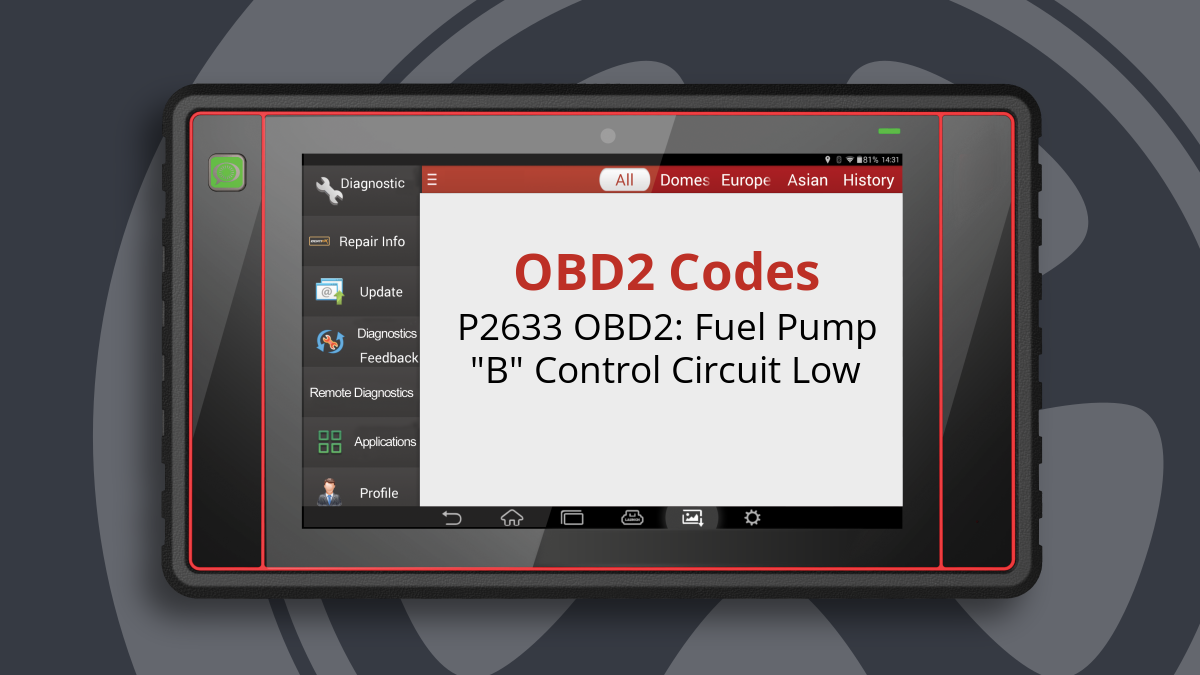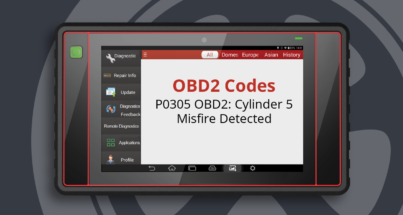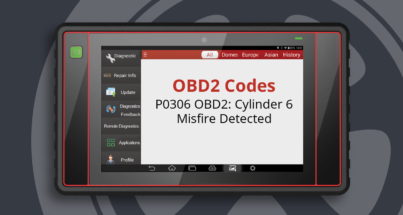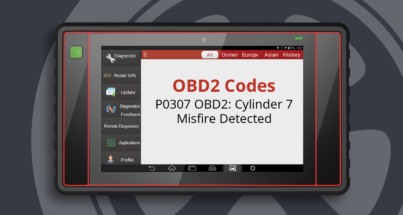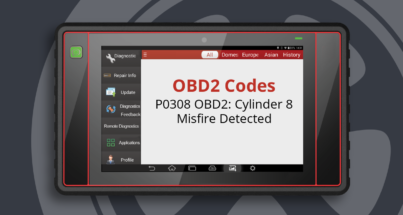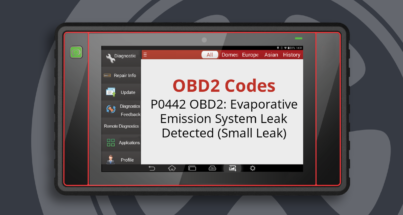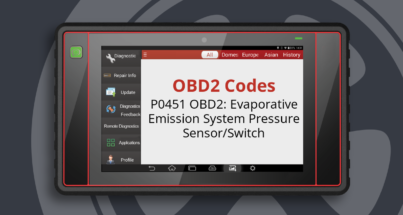The OBD-II code P2633 indicates an issue with the fuel pump control circuit, specifically for the “B” fuel pump. This code is logged when the Engine Control Module (PCM) detects that the control circuit is reading a low signal, which may disrupt fuel delivery to the engine.
What Does the P2633 Code Mean?
The P2633 code signifies that the PCM has received a signal from the fuel pump that is below the expected range. This low signal can result in decreased engine performance and can lead to further complications if left unaddressed.
What Causes the P2633 Code?
There are several potential causes for the P2633 code, including:
- Fuel pump failure
- Powertrain Control Module (PCM) failure
- Wiring issues in the fuel pump control circuit
What Are the Symptoms of the P2633 Code?
Common symptoms associated with the P2633 code include:
- Decreased engine performance
- Engine may not start
How Serious Is the P2633 Code?
The P2633 code is categorized as urgent. It indicates significant malfunctions that can lead to severe damage to the vehicle or pose safety risks to the driver and passengers. Immediate attention is necessary.
How to Diagnose the P2633 Code
Diagnosing the P2633 code typically involves the following steps:
- Use an OBD-II scanner to confirm the code and check for any additional codes.
- Inspect the fuel pump and its wiring for any signs of damage or corrosion.
- Test the fuel pump operation and the control circuit with a multimeter.
- Check the PCM for any faults or updates that may affect performance.
Common Repairs for the P2633 Code
Repairs for the P2633 code may include:
- Replacing the fuel pump
- Repairing or replacing damaged wiring or connectors
- Replacing or reprogramming the PCM if necessary
How Much Does It Cost to Fix the P2633 Code?
The cost to repair the P2633 code can vary widely based on the underlying issue. On average, repairs could range from $100 to $1,000, depending on whether a simple wiring repair or a complete fuel pump replacement is needed.
Can I Fix the P2633 Code Myself?
While some basic diagnostics and repairs can be attempted by a knowledgeable DIYer, it is essential to understand the complexity of the fuel system and the potential risks of incorrect repairs. If you are unsure, it is best to consult a professional mechanic to avoid further damage and ensure proper repairs.


